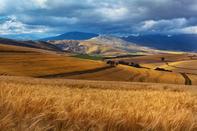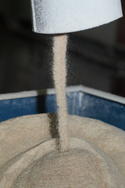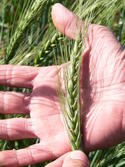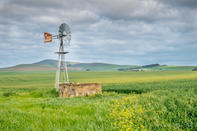Wheat Production Regions
The Free State used to be seen as the breadbasket of South Africa, but now hardly produces any wheat because of farmers opting for crops that are more economically viable and have lower associated production risks.

Today about 75% of our wheat is produced under dryland conditions and 25% under irrigation. Winter wheat produced on dryland in the Western Cape in South Africa accounts for about 50% of the country’s total production, whereas most of the summer wheat is produced under irrigation along major rivers in the Northern Cape.
Uses of Wheat

Breeding Programmes

Breeding programmes in South Africa traditionally focussed on the development of wheat with good baking and milling quality.
While production per hectare has greatly increased over the years, thanks to the use of new technologies, such as improved varieties, precision farming and so forth, production income has been under immense pressure due to a combination of climatic risks, poor international prices and rising input costs.
The poor economic viability of wheat production has led to a wheat industry plan, with one of the focusses to boost profitability being on the development of varieties with higher yields per hectare, that require fewer inputs, such as fertiliser and or pesticides or are more drought tolerant.
The idea is to improve these traits, without the changes having a negative impact on wheat quality.
Varieties

A huge variety of cultivars are available, which are divided into three categories, namely cultivars for dryland production in the north, summer production in the south and irrigation.
To choose the right variety, farmers should consider how the variety has performed in cultivar evaluation trials near their farm and also talk to other farmers about their experience with the variety.
The selected variety, however, should not only be suited to your climatic and soil conditions, but also produce the quality of wheat that is in demand by the millers and bakers. It is best to plant a few different varieties to spread production risks and to stick with tested cultivars.
New varieties should first be tested on a small-scale alongside stalwarts to compare their performance. Cultivar choice should nevertheless be adapted to changing weather or production conditions and to make room for better new varieties.
By Glenneis Kriel